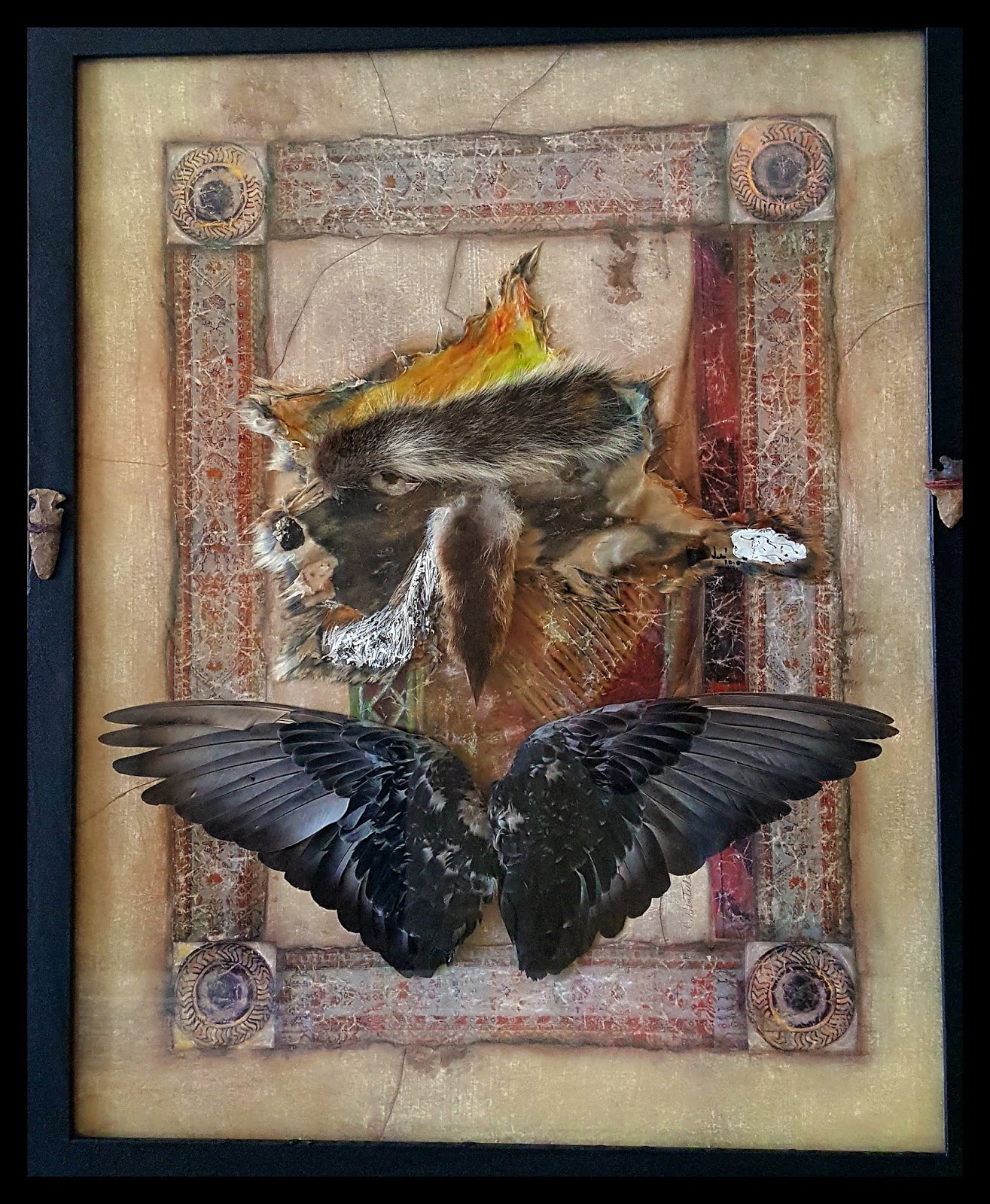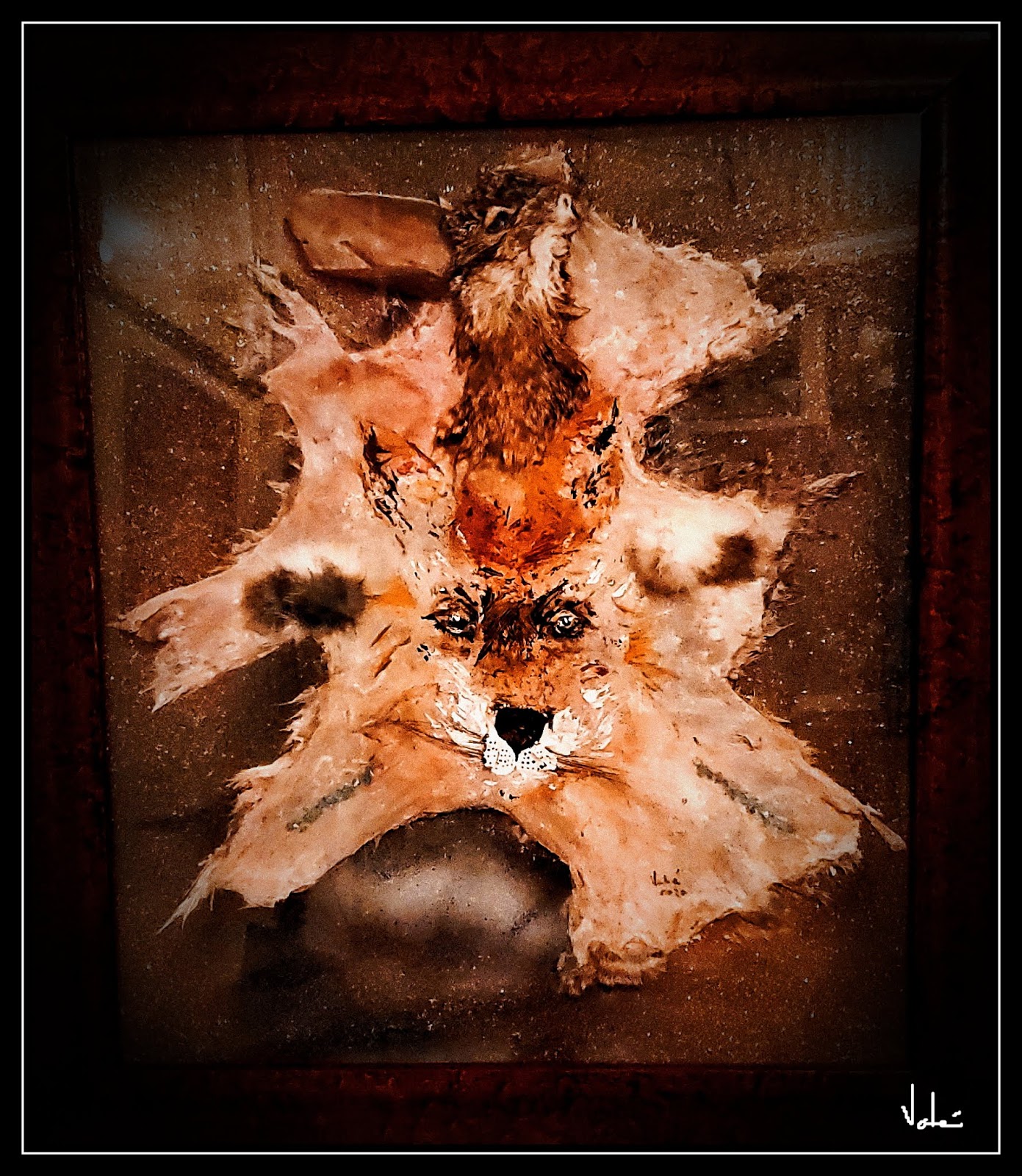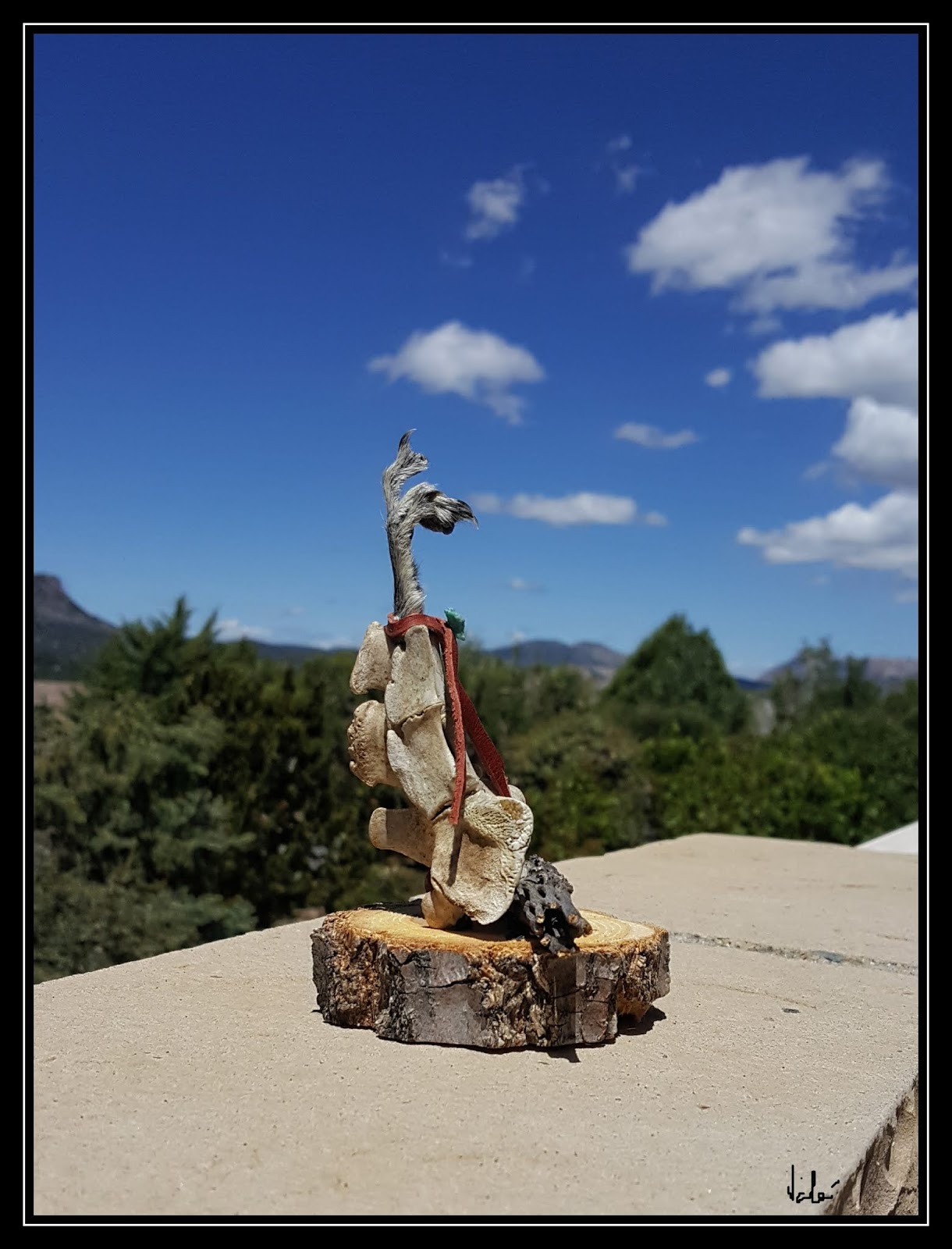Psychodiagnostik – What Rorschach Did Not Anticipate in 1921
Years ago, when I was travelling around the world as
a health care professional, I met a psychologist who told me that my keen
interest in interpreting shapes seems to have very basic five determinants – past experience, color,
smell, a short night sleep, and spicy food!
I still laugh about that psychoanalytic brilliance.
But, it is undeniable that I enjoy tremendously
seeing what others may discard as unshapely or uninteresting. In fact, most of
my artistic inclinations are toward the beauty of the slightly hidden messages people,
animals and engrained shapes reserve for the careful eye and keen explorer.
In some way I search for that phenotype of beauty
that is not immediately apparent.
… Ok, so I was preserving the hide of a cottontail
rabbit. Winter hides are thicker on these small animals and I can paint on them
without damaging. When the hide was dry, I looked at it and immediately I felt
that it was looking back at me! Yes, there was a perfect eye that had formed
during the salting process and now it was clearly looking at me, or at least at
something.
While in 1921 Rorschach proposed 10 inkblots to
assess in the diagnosis of schizophrenia, I am more impressed by Alfred Binet’s
attempts to use inkblots to test creativity. And perhaps S. Freud’s dream symbolism is the synthesis
between Rorschach’s psychoanalytic backdrop and Binet’s simplification of how
creativity may manifest itself.
No matter, this is what the cottontail rabbit hide
looked like to my creative eye:
What did I see there?
Well, I immediately thought of Mongolia, Yaks and Yak
herders. Without hesitation I saw a Yak looking to my left but somehow morphed
into the Yak herder with the stereotypical Mongolian pointed leather hat. Man
and beast had become one.
To delineate the line between the face and the hat,
I added an Abert’s squirrel tail. The Abert is one of two native squirrels of
Arizona. This tail is quite unique because its tip is not pointed but somehow
bifurcated… I had kept it for a while wondering what will accommodate this
unique tail. Of course it would be a Mongolian Yak, morphed into a Yak herder,
in a phenotype that emerged from a preserved cottontail rabbit hide.
Simple.
Ok, now I needed to accentuate the leather/fur hat
component so I added the tail of a hare en guise of ear flops. To further the
humanization of the Yak, I painted a salt-and-pepper bear on its chin and gave
the pointed hat some colour. Perfect.
But I needed a driving force to make this Yak and
herder reach higher. Perhaps it was the shape of that naturally formed eye that
made me think of vision. This yak was looking beyond the arid steppes of
Mongolia!
So I drew a symbolic Yak on the elongation of the
head. It gave both a feeling of sprinting forward and the force of the symbolic
bull.
To pursue the idea of driving forward and sprinting,
I took the opportunity to use pigeon wings I had preserved for a while. The bluish
shades of the wing gave that feeling of detachment and elevation.
… I am not sure if I was affected by all the
determinants proposed by the psychologist during the autumnal equinox in Oslo.
But I know that no pigeon wings had ever taken a Mongolian Yak to such psychoanalytic
heights!
October 24, 2018
© Vahé A. Kazandjian, 2018






Taking art to its origins of the cave paintings using a different medium?
ReplyDelete